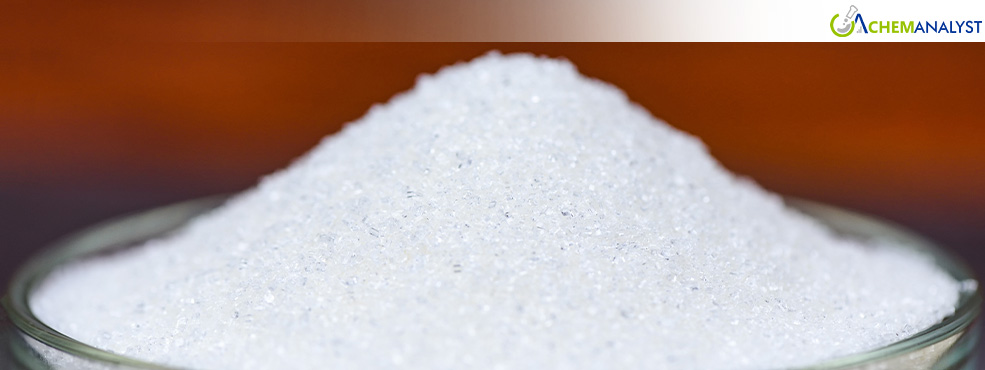Global Tartaric Acid Prices Surge Amid Rising Demand and Supply Chain Woes
- 26-Mar-2025 6:30 PM
- Journalist: Motoki Sasaki
The price of tartaric acid has risen strongly globally in March, driven by several factors. tartaric acid continues to be in high demand, primarily from food and beverages industries in which it is used mainly as an acidulant, stabilizer and preservative. The pharmaceutical segment also has a significant impact on the increasing demand, as tartaric acid is an essential component in drug formulations and effervescent tablets. As a result, market participants took advantage of the bullish move by pricing up commodity at highs to reach maximum margins, which helped solidify the upward trajectory.
China’s manufacturing recovered after mid-February and lead a surge in demand from the downstream industry. This surging production activity accelerated the market demand for products like tartaric acid, driving prices up. Since China is a major player in the world market, especially for the markets of Europe and the USA, the price increase also affected international buyers. The effects of this ripple effect are showing up in the high cost to buyers relying on Chinese sourced tartaric acid leading overall price increases.
The event of President Donald Trump starting a trade war against its largest U.S. trading partners, including China, on March 4, 2025, brought about substantial economic uncertainty and market volatility. As the tariffs and trade restrictions were placed, the cost of bringing foreign goods into the U.S. skyrocketed, affecting the businesses that depended on foreign materials. Due to these trade barriers, tartaric acid, mainly imported, experienced higher purchase prices. Importers faced high tariffs and supply chain issues and therefore increased in total expenditure. These growing expenses were then handed down to consumers, leading to an upswing in tartaric acid U.S. prices.
Europe is now the primary congestion site, given the significant delays at multiple major ports in North Europe and the Mediterranean. Further compounding supply chain problems, strikes and labor stoppages have extended to major ports including Hamburg, Rotterdam, Le Havre, Spain. Given full vessel berthing lineups through the end of March and no obvious near-term improvements, the transport of tartaric acid is much retarded. These logistical hurdles have tightened supply in the European market, driving upward pressure on tartaric acid prices.
As demand keeps growing, as well as the supply chain issues, the tartaric acid prices are likely to stay high in the near future. Constant trade interruptions and political uncertainty could aggravate already stressed global tartaric acid market. Industries depending on tartaric acid—including food and beverage, pharmaceuticals, and chemicals—could face higher expenses and potential supply insufficiency.



